Ready to achieve that healthy smile? All you need to start is a good set of dental tools. Tools like brushes, toothpaste, floss and mouthwash all can help you maintain a beautiful smile with less plaque, cavities and gum disease. Our experts put together some recommendations for each of these tools, and why they are important to keep in your daily maintenance routine.
- Brushes – A good brush is one you will actually use at least twice a day, but if you are having a certain dental issue, you may want to talk with your dentist at your next cleaning about what may fit your needs the best. Oscillating toothbrushes can be helpful for removing plaque, and often can help as well with removing particles that may cause staining later on. Dr. Laura Frangella points out “Oscillating toothbrushes minimize technique errors that occur with manual toothbrushes. People often miss hard to reach areas because they are rushing or just don’t know proper brushing technique. Oscillating toothbrushes are designed so that all you have to do is position the toothbrush head in the proper areas, and it will do all the work for you by performing the proper brushing motions on its own.” Frangella dentists often recommend Sonicare and Oral-B brands for oscillating toothbrushes. If you don’t feel comfortable using an oscillating brush because of sensitive teeth or gums, or cost is an issue, a soft gentle brush may be a good choice for you. Most dentists recommend some type of soft bristle as people tend to brush harder than is really necessary.
- Toothpaste – Most dentists recommend a toothpaste that contains fluoride. Fluoride is recommended for its remineralizing attributes, having fluoride in your toothpaste will help avoid cavities and tooth decay by keeping enamel healthy and strong. Frangella Dentists recommend brands including Crest, Colgate and Sensodyne. There are toothpastes that are geared to more sensitive teeth, and even some for people with dentures or veneers. For more sensitive teeth, Frangella Dentists recommend Sensodyne toothpaste. Be sure to select one that fits your needs best. Ask your dentist at your next cleaning what the biggest issue is with your teeth, and you’ll be able to narrow down quickly which toothpastes may be best for you. Some people prefer to go a more natural route. Some natural toothpastes can be too abrasive for teeth, so be sure to read the labels carefully to make sure it’s effective in helping with cavities. If you are unsure about whether or not your toothpaste is an effective one, be sure to bring it to your next dental cleaning to ask your dentist.
- Floss – It’s important to floss your teeth once a day to get any food particles that may have gotten stuck in between your teeth that your brush can’t reach. Think of it as the tool that gets in the deep crevices where the brush can’t get to. If those particles stay in those crevices, bacteria will build, and that’s when issues like gum disease and cavities can begin. There is the traditional string version of floss that most dentists use for cleanings. These can often come in different flavors, widths and offer the flexibility to use different techniques for flossing. The wider the floss, typically the easier it will be to wrap around your fingers, but it may be more difficult in getting in and out of teeth that are tight together. The thinner string will get in between really hard to reach places most often, but may be difficult to wrap around your finger. Frangella Dentists typically recommend Glide and Satin-floss. There are also floss picks that some people prefer that come with a short string of floss already measured out, and a pick on the other end. These can be helpful for some who may not be able to reach their back molars. Children often find these to be easier than the traditional string floss. Another tool that many dentists recommend is a water flosser, or oral irrigator. These can be effective at removing plaque, often easier than traditional flossing, as they push water into those deep crevices, removing food particles, much like traditional floss would. This might be a good option for those with braces or bridges who may struggle with traditional floss. Frangella dentists recommend the Waterpik water flosser most often.
- Mouthwash – Mouthwash tends to all look alike, so how do you know which one to use? First, most dentists recommend that you make sure it has the American Dental Association’s Seal of Approval on it. This means that it passes all the standards for safety and efficacy. Mouthwash should include some version of fluoride to help with plaque. Look for one that may target a dental issue your dental hygienist may have mentioned at your last appointment, such as anti-plaque, anti-cavity, or even sensitivity issues. Frangella Dentists often recommend Listerine or ACT brands of mouthwash. Also, remember that mouthwash is not a substitute for brushing and flossing. It can be helpful post-flossing to help remove any bacteria that may be left from flossing, and help prevent gingivitis and other gum disease; just be sure to use it in moderation.
Whether you use one item over the other, it’s important just to use what works for you! Any dentist would agree that there’s no such a thing as a bad dental tool as long as it’s getting used. Take care of your teeth, and they will help take care of your overall health! If you want specific recommendations, ask your dentist at your next dental visit, or feel free to call us to schedule your next appointment.


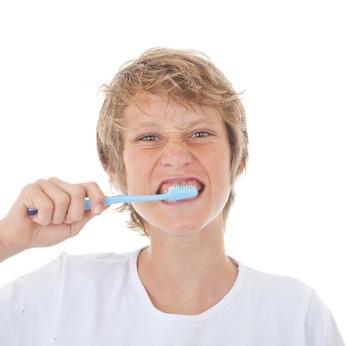
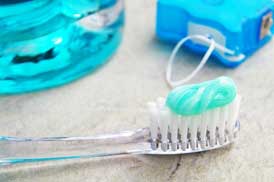


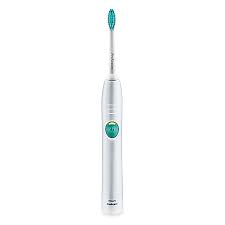
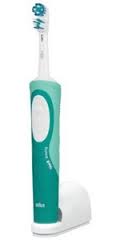

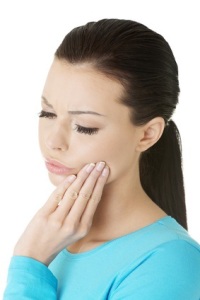
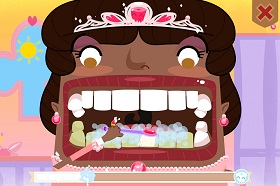 The Academy of General Dentistry just released a free interactive game: Toothsavers, available online as an app for Android and iOS devices. The game is for ages 3-6 and was designed to get kids in the routine of brushing twice a day for two minutes each time. As many of you know well, it is a very daunting task at times to motivate children to take care of their own teeth. Any feedback on the use of this app and how it is working with your kids would be greatly
The Academy of General Dentistry just released a free interactive game: Toothsavers, available online as an app for Android and iOS devices. The game is for ages 3-6 and was designed to get kids in the routine of brushing twice a day for two minutes each time. As many of you know well, it is a very daunting task at times to motivate children to take care of their own teeth. Any feedback on the use of this app and how it is working with your kids would be greatly 